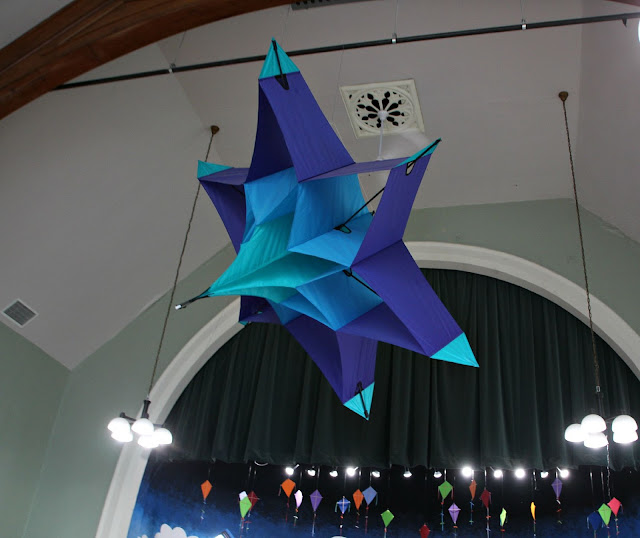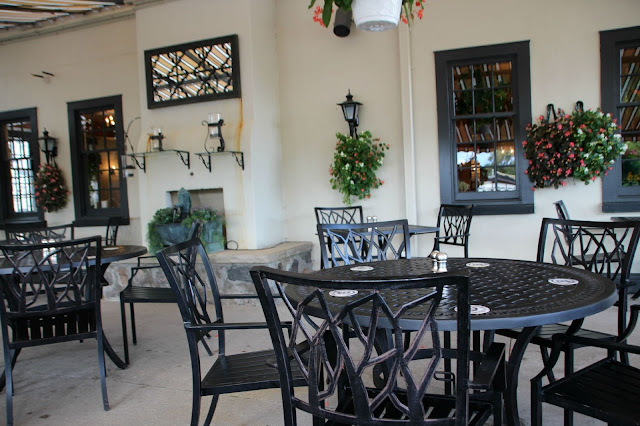And the corn is as high as an elephant's eye!
We took a drive to the township of St. Jacobs near Waterloo to go to the large Farmers' Market. Today we are going to walk around town. Check back on Friday to visit the market itself.
You can click here for a mural and here for a church in town.
While most visitors are drawn to St. Jacobs for its antiques, fine linen and furniture shops, many are also intrigued by its unique history. Two centuries ago the Village was known as Jakobstettel or "Jacob's settlement" after Jacob C. Snyder, the Mennonite farmer who pioneered the early development of the town. Although "Jakobstettel" was anglicized to "St Jacobs" with the opening of the first post office in 1852, the old Mennonite family names still permeate the Village.
Eby Street is a well traveled thoroughfare, the old William W. Snyder House, built in 1898, now re-named Jakobstettel Guest House, is an elegant Queen Anne style mansion, while the Steiner House built around 1857, is a four-square Georgian building fronting on King Street. (In the course of recent renovations, a child's shoe was discovered buried in the wall - a good luck charm, according to an old German belief.)
Time to leave now.
The train travels around the inside and out of the store.
The red brick structure built in 1914 on the corner of Cedar and King was, until
recently, the home of the Calvary United Church congregation. Now it is the
home of Toy Soup, a toy store.
Step inside with me. They preserved the lovely stained windows.
Time to leave now.
Kitty corner to the church is this whimsical store, a typical shopkeeper's dwelling 1800s.
The train travels around the inside and out of the store.
From the late 1880's to the 1960's, Mennonites travelling by horse and
buggy brought their horses in to be shoed (shod?) by blacksmiths like Mr.
Martin who worked here until 1987. The shop was a favorite
destination for the village children who were fascinated by the “red
hot” work of the men outfitted in heavy leather aprons, gloves and
boots.
Nowadays you can pick up a corn broom made by hand on the premises.
On the corner of King Street and Front Street another landmark of St Jacobs’ Mennonite heritage rises against the skyline: the silos of the Pioneer Roller Flouring Mill.
Established by Elias W.B Snider in 1870, this was the first mill in Canada to export its prime quality flour to Glasgow, Liverpool and Belfast. Today the silos have been converted into an unusual retail outlet for the Village’s gifted craftspeople, and as a showcase for exquisite collections of crystal ornaments, brass lamps, jewelry, leatherwork, quilts, pottery and glass-blown objects d’art.
We drop in to Benjamin’s Restaurant & Inn on King Street, kitty-corner from the Silos. Built in 1852 by Joseph Eby as a coach-stop between Kitchner (then known as Berlin) and Elmira, it was flanked by a horse and carriage livery service.
We site on the lovely patio behind the Benjamin's Inn.
The Block 3 Brewery is just behind.




























Fun! I haven't been there in years!
ReplyDeleteWow so many cool things to see. I love the shoe sign and the train that goes outside. The brooms on the door are cool too. What a great day!
ReplyDeleteIt's a town with so much character. I remember the shops in the silos well.
ReplyDelete